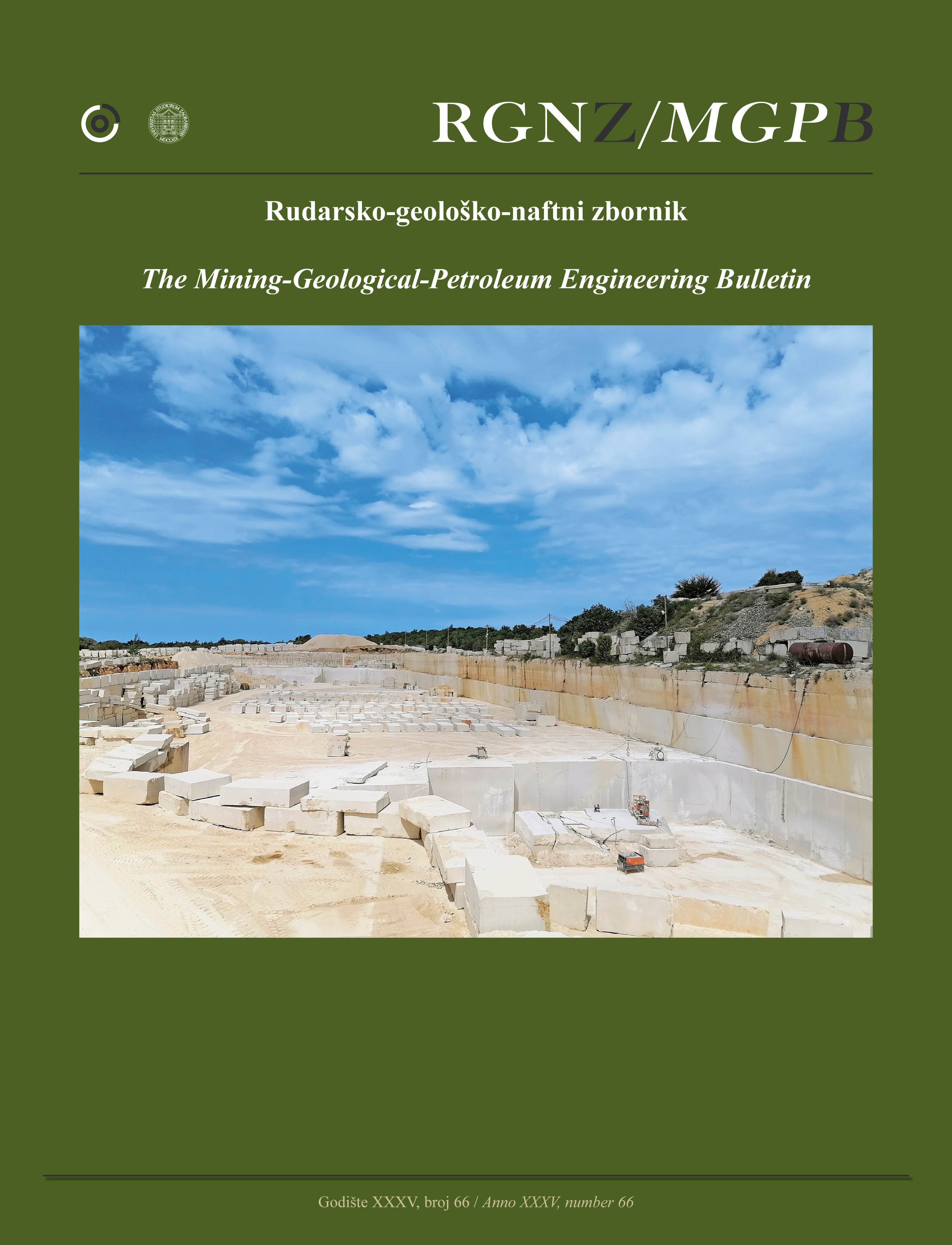Investigating the effect of layering and schistosity on the mechanical behavior of rocks using the discrete element method
DOI:
https://doi.org/10.17794/rgn.2023.5.4Keywords:
Quartz schist, calibration, schistosity surfaces, discrete element method, mechanical properties of rockAbstract
Anisotropy and deformation in rock material is mainly caused by the non-uniformity and irregular geometry of fracture systems. This factor is among the important problems in designing and evaluating the stability of engineering structures. In this research, the mechanical behavior of layered and schistose rocks is investigated by conducting compressive uniaxial and triaxial strength laboratory tests on rock samples from different directions and angles varying with respect to the loading axis. The tests were carried out on intact blocks of quartz schist rock with 0° layering and invisible schistosity. Next, numerical modelling was performed using the discrete element method (DEM) and calibrating numerical models by laboratory tests. In this process, three types of connections between the minerals (i.e. mica-mica, mica-quartz, and quartz-quartz), the growth of cracks, and the fracture mechanism of layered rocks with different layering angles were investigated. The results showed that unlike the arrangement of the rock particles, the layering angle of quartz schist has an important effect on the mechanical properties of the rock in such a way that uniaxial compressive strength, Young's modulus, cohesion, and internal friction angle respectively have the greatest effect due to the change of the layering angle, while the tensile strength has the least effect.
Downloads
Published
How to Cite
Issue
Section
License
Copyright (c) 2023 Mahdi Aftabi, Kaveh Ahangari, Ali Naghi Dehghan

This work is licensed under a Creative Commons Attribution 4.0 International License.
Creative Commons-BY
Authors who publish with this journal agree to the following terms:
In agreeing this form, you certify that:
- You read the ethical codex of the RGN zbornik available at journal web.
- You submitted work is your original work, and has not previously been published and does not include any form of plagiarism.
- You own copyright in the submitted work, and are therefore permitted to assign the licence to publish to RGN zbornik.
- Your submitted work contains no violation of any existing copyright or other third party right or any material of an obscene, libellous or otherwise unlawful nature.
- You have obtained permission for and acknowledged the source of any illustrations, diagrams or other material included in the work of which you are not the copyright owner.
- You have taken due care to ensure the accuracy of the work, and that, to the best of your knowledge, there are no false statements made within it.
- All co-authors of this submitted work are aware of, and in agreement with, the terms of this licence and that the submitted manuscript has been approved by these authors.
Publication licence
You retain copyright in your submitted work, according to journal license policy (CC-BY). By signing this form you agree that RGN zbornik may publish it under the publication licence. In summary the licence allows the following:
Anyone is free:
- To copy, distribute, display, and perform the work.
- To make derivative works.
Under the following conditions:
- The original author must always be given credit.
- The work may not be used for commercial purposes.
- If the work is altered, transformed, or built upon, the resulting work may only be distributed under a licence identical to this one.
Exceptions to the licence
In addition to publishing the work printed under the above licence, RGN zbornik will also enable the work to be visible online.
The journal editorial can change the licence rules anytime but it cannot retroactively restrict author(s) rights.


